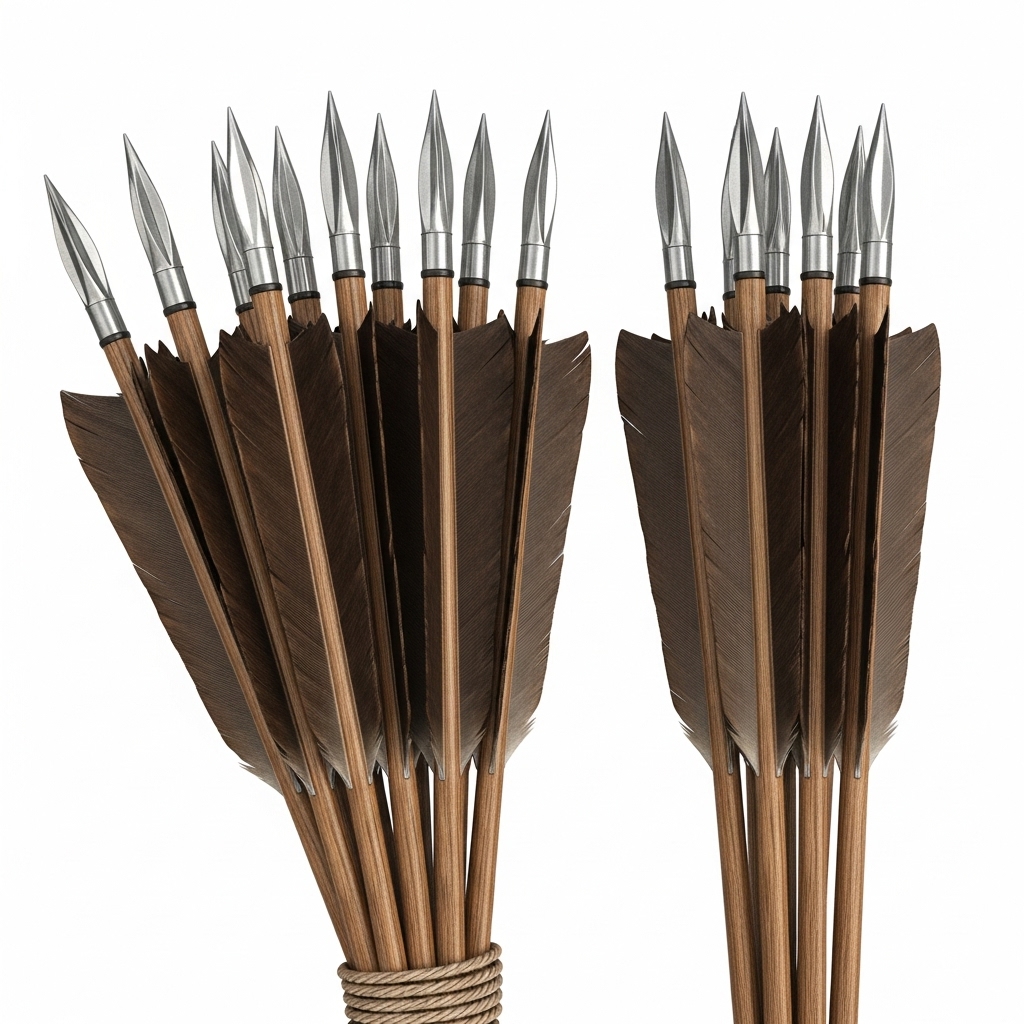Arrows

Weight: 1 lb. (20 arrows)
Cost: 1 GP (20 arrows)
Category: Ammunition
Function: Longbow and shortbow ammunition
Description
Slender wooden shafts tipped with sharp metal points and fletched with feathers for stable flight. These essential projectiles are designed for use with bows, providing accurate long-range combat capability for hunters, guards, and adventurers.
Usage Instructions
Loading: Nock arrow onto bowstring with fletching facing away from bow.
Aiming: Draw bowstring while sighting target through arrow shaft.
Release: Let bowstring snap forward to propel arrow toward target.
Combat Applications
- Ranged Combat: Primary ammunition for bow-based attacks
- Hunting: Essential for taking game animals at distance
- Guard Duty: Defensive ammunition for fortifications
- Siege Warfare: Anti-personnel projectiles from walls
- Stealth Attacks: Silent elimination of sentries
Arrow Components
Shaft: Wooden body providing structure and weight Point: Metal tip that penetrates targets Fletching: Feathers that stabilize flight Nock: Notched end that fits onto bowstring
Quality Variations
Common Arrows (1 GP/20): Basic wooden shafts, iron points Military Arrows (2 GP/20): Hardwood shafts, steel points Hunting Arrows (3 GP/20): Balanced for accuracy, broad heads Masterwork Arrows (10 GP/20): Perfect balance, superior materials
Tactical Considerations
Advantages:
- High accuracy at long range
- Silent flight until impact
- Can be recovered after combat
- Effective against lightly armored targets
- Abundant and inexpensive
Limitations:
- Ineffective against heavy armor
- Can break on impact with hard surfaces
- Affected by wind and weather
- Limited damage compared to melee weapons
- Requires bow for use
Specialized Arrow Types
Bodkin Points: Armor-piercing tips for heavily armored foes Broadheads: Wide cutting edges for hunting applications Blunt Points: Non-lethal subdual damage Fire Arrows: Oil-soaked tips for incendiary attacks Whistling Arrows: Hollow points that create sound in flight
Recovery and Reuse
Intact Arrows: Can be recovered if they don't break on impact Damaged Shafts: Broken arrows are typically unusable Bent Points: Can sometimes be straightened and reused Lost Arrows: Arrows that miss may be difficult to find
Storage and Transport
Quivers: Specialized containers for organized arrow storage Arrow Cases: Protective boxes for long-term storage Bundles: Tied groups for bulk transport Belt Loops: Quick access attachment for individual arrows
Maintenance Requirements
Point Sharpening: Keep metal tips sharp for maximum penetration Shaft Inspection: Check for cracks or damage that affect flight Fletching Repair: Replace damaged feathers for accuracy Straightening: Correct bent shafts to maintain accuracy
Alternative Uses
- Improvised Tools: Shafts can serve as measuring sticks
- Fire Starting: Wooden shafts provide kindling material
- Trap Components: Use in mechanical trap construction
- Marking: Leave arrows as trail markers or messages
- Crafting Materials: Points and fletching for other projects